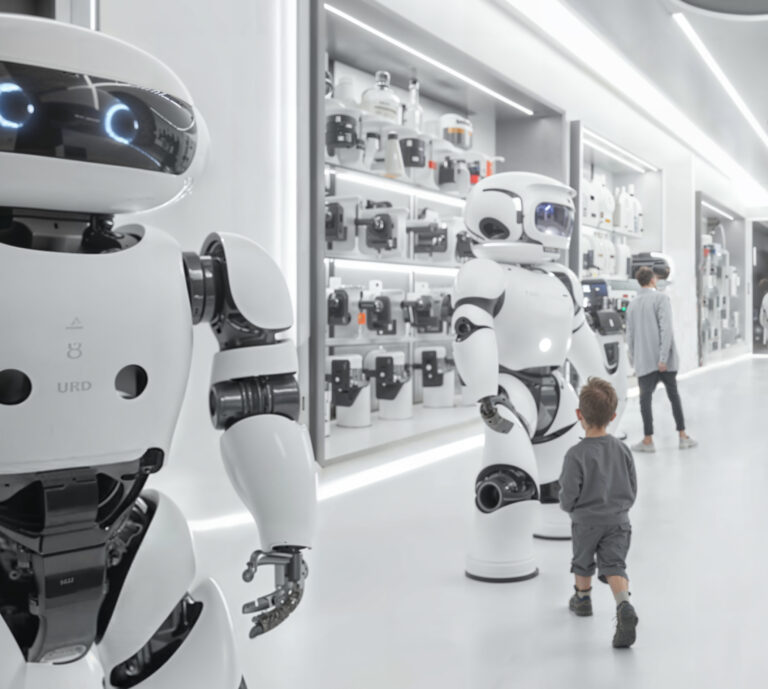×

Our Innovation Agent, Scott Jeffrey, explores how future retail experiences will have to evolve once shopping for humanoid robots becomes commonplace.

GlobalShop, the retail industry’s largest design and merchandising trade show, is a mecca for retailers, agencies, and vendors alike. It’s an inside look to the newest products, hottest trends, and most innovative technologies, but also addresses the most pressing issues in retail. The “brick and mortar apocalypse” was a hot topic this year; despite the shuttering of thousands of stores, GlobalShop challenged the notion that physical stores are a thing of the past. The solution to preventing stores from locking their doors and sitting vacant? Retailers must reinvent the experience.
A store must be more than a place to house and sell products: it should be an interactive environment that accentuates the products within and helps customers satisfy their needs. During our time in Chicago for GlobalShop, we set out to find brands that were successfully following this model. To our surprise, the ones that were reinventing the brick and mortar experience were digitally native. These brands have discovered the balance between having a popular digital presence and engaging physical locations.
Here were some of our favorites:
When a shopper walks through the doors of athletic apparel store, Outdoor Voices, they enter a space decorated with bright red punching bags and floor to ceiling gym lockers. Take the clothes out and it feels more like a workout facility than a store.
Outdoor Voices strategically designed the store this way so shoppers can visualize themselves wearing their clothes during their next heart-racing workout. The experience is exciting and thought-provoking and becomes more than just trying on workout clothes.
 Source: Outdoor Voices
Source: Outdoor Voices
To combat the brick and mortar apocalypse, retailers are urged to develop store concepts with purpose. Interior design should never take attention away from the products but should be used to accentuate them.
Footwear retailer Allbirds markets itself as the “World’s Most Comfortable Shoes.” To live up to this claim, they developed the perfect design concept for the perfect fitting shoe.
The interior design of the store serves as a narrative for how the products came to be: from beginning as individual materials, to the design inspiration process, and ending with the finished shoes themselves. This approach of using the décor to tell a story ensured that the products were the main attraction of the store.
 Source: Business Insider
Source: Business Insider
Making a store feel like home is no easy feat. Yet, The Tie Bar beautifully accomplished this with the homey atmosphere their store exudes. Adding items found in most homes, such as filled bookcases, greenery in the windows, and dining room tables, helps ease some of the stress shoppers feel when searching for the right piece.
The Tie Bar smartly exhibited their products in a way that made consumers feel “at home.” The store’s familiar settings help shoppers imagine themselves picking out a piece to wear for everyday and special occasions.
 Source: InsideHook
Source: InsideHook
Brick and mortar is more relevant than ever before. Believing that retail has no need for them and will go entirely digital is not only a disillusion but reckless. While digital is vital to brands’ success in our fast-paced society, it is limited in being able to satisfy consumers’ cravings for physical interactions and experiences. Brands have the perfect opportunity to meet those needs through brick and mortar and can use them as spaces for inspiration, growth, and customer interaction.


